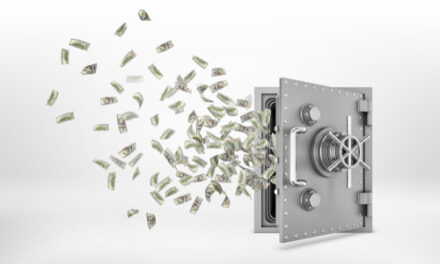For me, one of the more interesting aspects of living through this pandemic is the knock-on effects the virus is having outside the human body.
One is how virtual spaces have redefined how we work and receive health care.
Another is the breakthroughs in medical technology that deliver vaccines in record time … while opening up a new frontier for treating other viral diseases.
But the pandemic has also exposed harsh realities that most of us never thought much about.
For example … just how fragile global supply chains really are.
Here’s last week’s cover of The Economist:
Are YOU Ready for Risk?

“The shortage economy.” That sums it up perfectly.
At first it seemed like a bad joke that supermarkets couldn’t keep toilet paper stocked on the shelves.
Then a lack of semiconductors led to inventory shortages of everything from pickup trucks to laptops and smartphones.
Now labor shortages are rampant … slowing services, production … and even travel.
But that’s not all. The dominoes just keep falling.
The next one will topple just in time for winter…
The Growing Energy Crisis
Shortages are ravaging the energy sector, with many parts of the globe staring down a worsening crisis.
In Europe, natural gas prices are five times higher than at this point last year. At least 10 provinces in China are grappling with blackouts. Americans have been warned that their energy bills are about to explode. And we’re already suffering sticker shock at the gas pumps.
So just as companies are rethinking their supply chains, nations are racing to secure their energy. That means becoming self-reliant for energy production. In turn, that’s creating a $100 trillion-plus opportunity for one sector just beginning to hit its stride.
The Boom in Renewables
The switch to green energy is well underway, and the global energy crisis will only accelerate the transition to renewables.
Various forms of renewable energy are already cost competitive with fossil fuels. You can see that in the chart below, which compares the cost per megawatt-hour for various energy sources. Solar panels and wind now rank among the cheapest:

Source: Lazard Estimates
(Click here to view larger image.)
There’s no doubt that the growing energy crisis will expedite the transition to renewable energy.
That’s because renewable energy is generated close to where it is ultimately consumed. For nations seeking to secure their strategic supply of power, that means reducing dependency on piping energy products from international producers.
Cost competitiveness and the realities of energy security mean that renewables are projected to see investments of $3.5 trillion per year for the next 30 years.
One way to play this trend is with companies supplying the products and technology to enable the green energy revolution. You can do that with the iShares Global Clean Energy ETF (Nasdaq: ICLN).
But in the most recent issue of The Bauman Letter, we found the perfect play to tap into the world’s growing appetite for renewable energy … and turn that appetite into a steady stream of income. Just click here to read the latest issue!
Best regards,

Clint Lee
Research Analyst, The Bauman Letter










